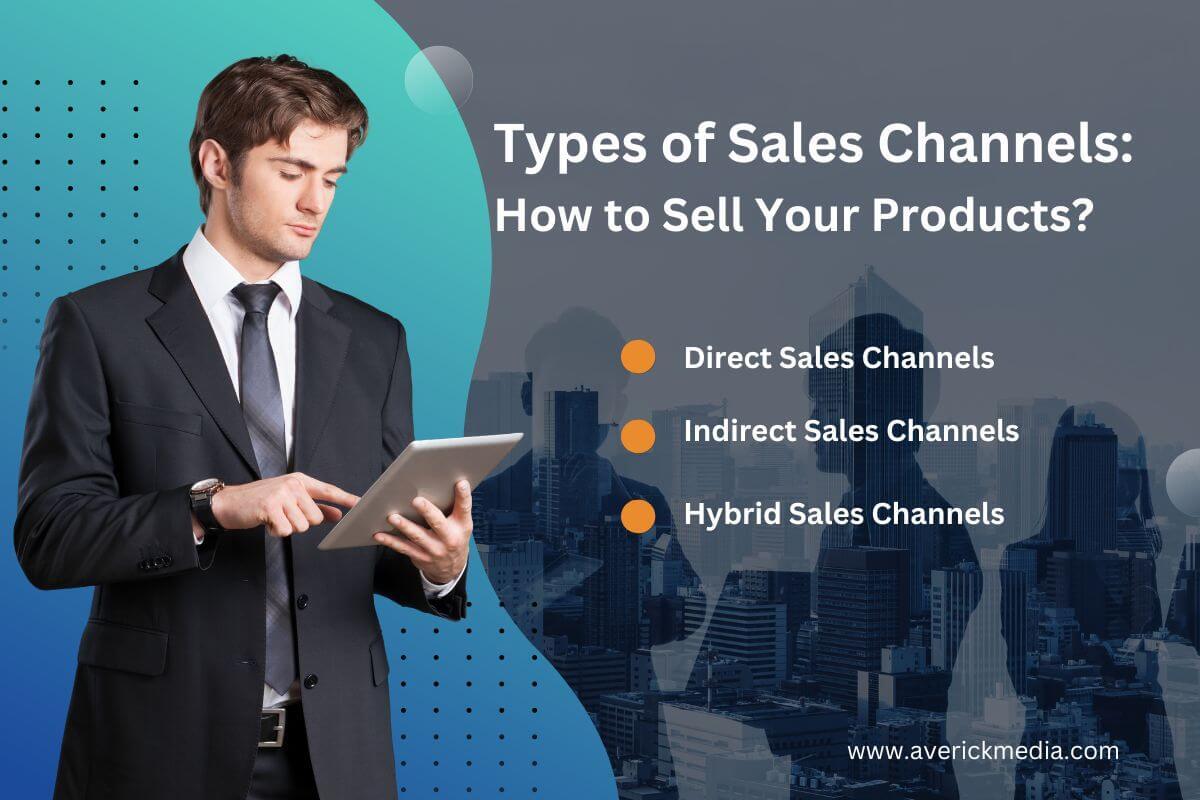Connecting with Care: Reaching Busy Healthcare Professionals with a Winning Mailing List Strategy
In a world where healthcare is a dynamic and essential industry, healthcare marketing has emerged as a vital bridge between service providers, pharmaceutical companies, and the healthcare professionals who deliver care. It serves as the critical conduit for spreading awareness, conveying valuable information, and fostering collaboration among stakeholders.
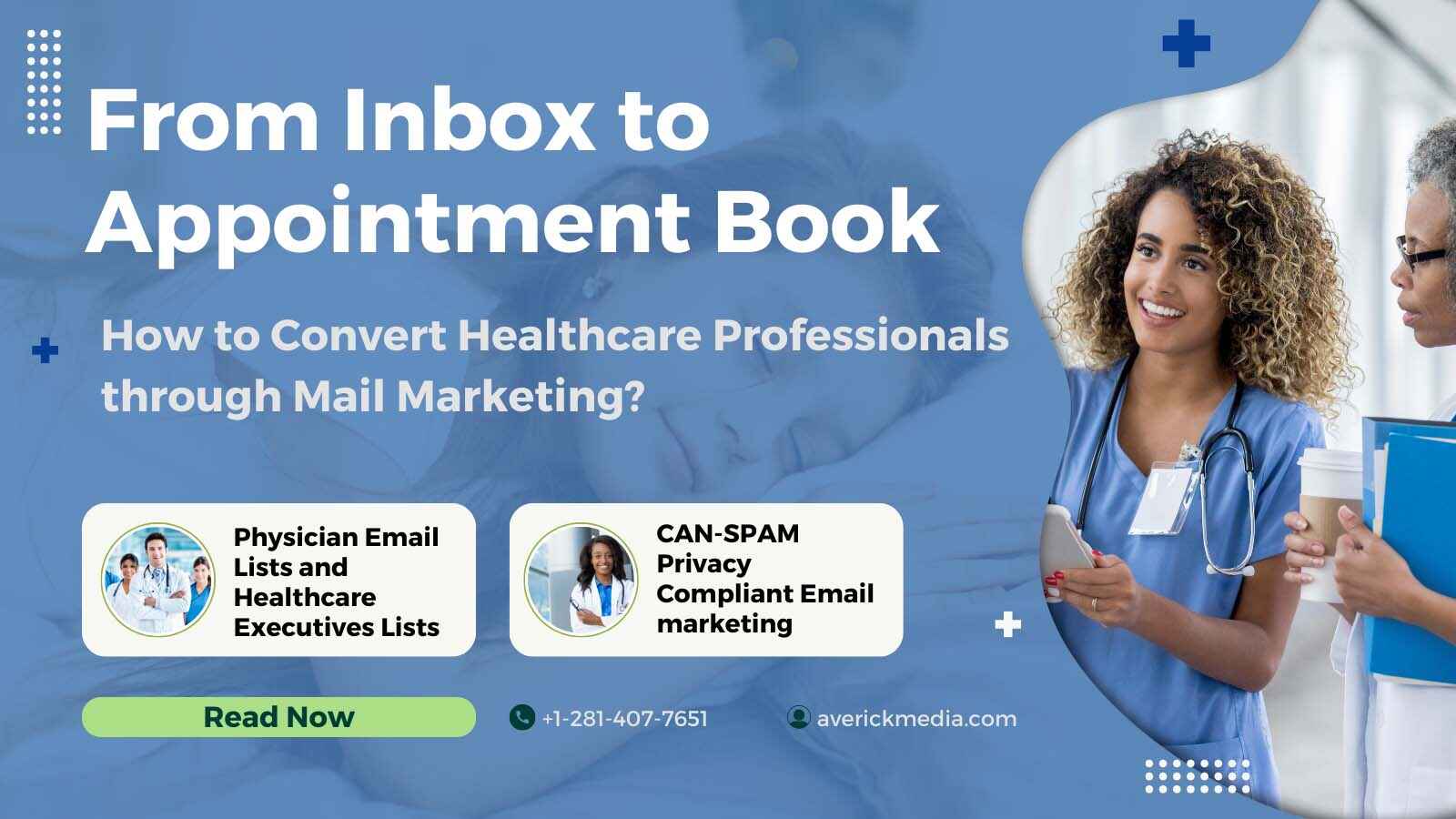
Nevertheless, this task is no walk in the park, primarily due to the demanding nature of healthcare professionals' lives. These dedicated individuals, including doctors, nurses, and administrators, are often swamped with patient care, research, and the perpetual pursuit of staying up-to-date with the latest advancements in medicine. So, as healthcare marketers, the challenge is to find innovative and distinctive ways to break through these time constraints and reach these professionals effectively. In this blog post, we'll explore just how to wire your healthcare marketing with a winning healthcare email list, ensuring your message resonates amidst the busy healthcare landscape.
What is a Healthcare Mailing List?
A healthcare mailing comprises the names, email addresses, mail addresses, job titles, phone numbers, geographical details, practice types, and more, of healthcare individuals and organizations. This comprehensive database serves as a priceless resource for businesses and professionals in the healthcare sector, empowering them to distribute vital information, market services, and foster robust connections with their audience.
With a meticulously organized mailing list at your disposal, you hold the key to direct communication with potential clients or prospective business partners. This not only enhances your outreach efforts but significantly elevates the chances of turning leads into valued customers.
Understanding The Significance Of Email Lists In Healthcare
An updated and accurate healthcare email list is the cornerstone of successful email campaigns. A well-maintained, structured, and responsive list ensures that your messages connect with your audience and drive higher engagement rates.
For marketers with tight schedules, sparing time for constant list updates is hardly ideal. Embracing the best healthcare email list, as outlined in this guide, not only streamlines your efforts but also conserves your precious time and resources.
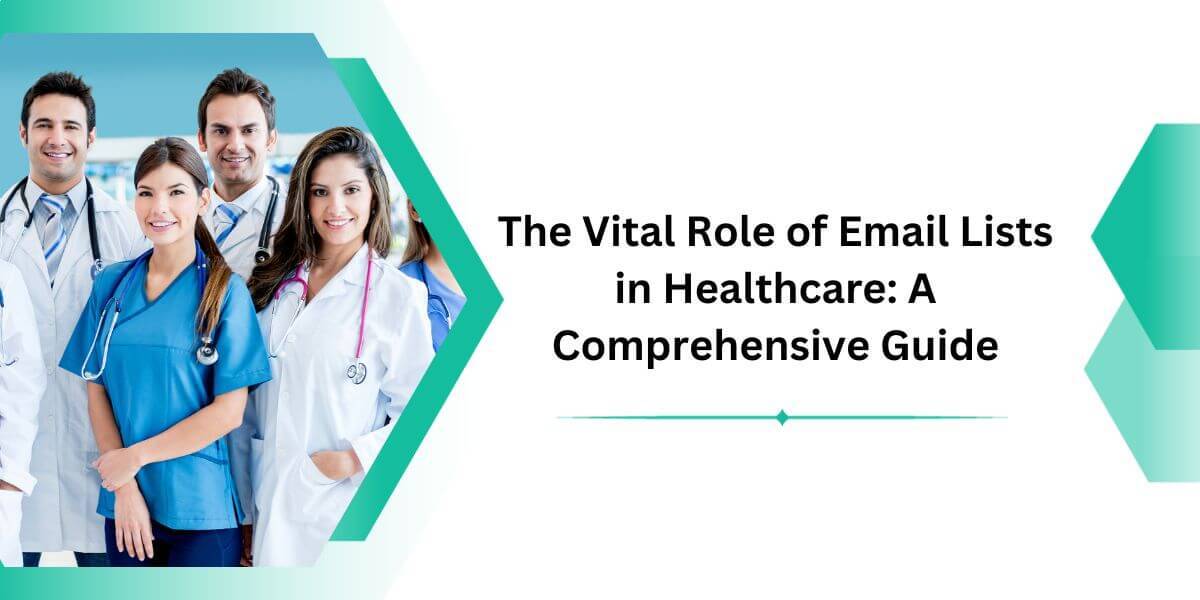
Source: clickmatix
In addition, healthcare mailing lists offer numerous advantages, such as –
- Enhanced Deliverability: Maintaining a pristine email listensures that your messages consistently reach engaged subscribers. High open rates and low bounce rates are signals that email providers appreciate. With this, your emails are far less likely to end up in the dreaded spam folder or face blacklisting.
- Elevated Engagement: Active subscribers lead to higher email engagement. They're more inclined to interact with your emails, resulting in increased clicks, website traffic, and potentially more sales.
- Strengthened Customer Relationships: When your subscribers receive relevant and valuable content, they're not only more likely to read your emails regularly but also to develop stronger loyalty to your brand. Building trust through your emails can help foster lasting customer relationships.
- Cost Savings: A well-managed email list translates to improved email performance and a higher return on investment (ROI). This means you get more value from your email marketing efforts while minimizing costs.
Are You Truly in Tune with Your Audience?
Healthcare professionals form a diverse and multifaceted group, ranging from physicians and registered nurses to administrators and specialists. This diversity is not only in terms of their roles and responsibilities but also in their interests, challenges, and the type of information they find valuable.
82% of marketers believe that understanding your target audience is a fundamental element of successful marketing. It involves delving deep into who your audience is, what motivates them, how they interact with your brand, and what challenges they face. This knowledge helps you tailor your messaging, build trust, and communicate effectively.
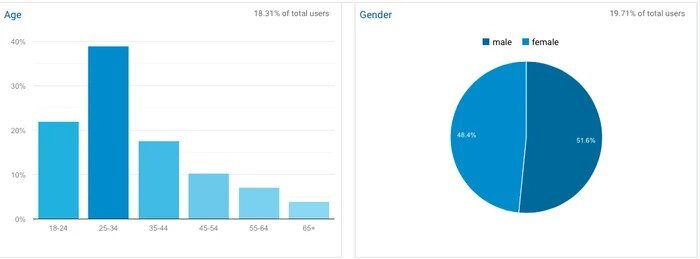
Source: blog.hubspot
To understand your audience better, gather data on demographics, psychographics, and behavior. Know their pain points, communication preferences, and gather feedback directly from them. Analyze what competitors are doing to reach the same audience and utilize data analytics tools to track online behavior.
Audience understanding is an ongoing process; adjust your strategies as their needs and preferences evolve. This deep understanding allows you to craft messages and strategies that resonate, ultimately strengthening your connections with your audience.
Make A Winning Mailing List Strategy With These 10 Best Practices
Your database is a goldmine, comprising clients, past clients, prospects, referral partners, and valuable contacts within your professional network. These individuals exist in the depths of your email accounts, CRM systems, and social media connections.
Now, imagine the potential of bringing them all into your email list. The strategy you employ need not follow the crowd; it can be uniquely tailored to your business. What's crucial is personalization. Your approach should be as distinct as your brand, ensuring that when your email list is fully prepared, it's brimming with paying, loyal customers who believe in your value and vision.
Here are the top 10 strategies to make the best healthcare email list –
1. Define Your Sources
To kick things off, it's crucial to identify credible sources for lead generation. Trust is the linchpin here. Trustworthy sources positively influence your brand's reputation and help you maintain legal and ethical practices, while unreliable sources can have the opposite effect.
Trust underpins the entire lead generation process and contributes to its success. Here are some genuine channels you can rely on:
- Website Opt-Ins: The trusty starting point, where your website becomes a magnet for leads. Offer compelling content or exclusive promotions to entice visitors to subscribe.
- Networking Events: Physical or virtual, these gatherings offer opportunities to establish genuine connections and cultivate leads within your industry. Healthcare-specific events are hubs for trustworthy leads, giving you face-to-face access to potential clients.
- Social Media: Platforms like LinkedIn, Twitter, and Facebook can be goldmines for lead generation. Establish authentic engagement with potential leads.
- Webinars and Workshops: Host events that require registration, capturing the contact information of attendees who are eager to learn and engage.
- Trusted Third-Party Providers: In your pursuit of a top-tier healthcare mailing list, make it a foremost priority to source your data from trustworthy and established providers. Avoid the temptation of procuring lists from unverified or dubious sources, where the risk of encountering outdated or inaccurate information looms large. Your assurance of list quality hinges on the integrity of your data sources.
Forge partnerships with organizations that specialize in healthcare data collection. These specialized entities are well-equipped to provide you with trustworthy and up-to-date contact details, ensuring the accuracy and efficacy of your healthcare mailing list. - Government Directories: Government healthcare directories offer comprehensive lists of healthcare facilities, professionals, and organizations. They can be particularly useful for businesses looking to partner with or sell services to government healthcare agencies, public hospitals, or research institutions.
- Medical Directories: Medical directories are a treasure trove of information about healthcare professionals, including doctors, specialists, and healthcare practitioners. These directories are instrumental for businesses targeting medical professionals with their products or services.
- Healthcare Associations: Healthcare associations bring together professionals and organizations in the healthcare sector. Joining or collaborating with these associations can help you access a network of industry experts, share knowledge, and establish partnerships that can lead to valuable business connections.
Healthcare-Specific Email Lists
2. Use Double-Lock Opt-in Option
Implementing a double opt-in process is a meticulous, yet invaluable, strategy to confirm the genuine interest of your subscribers in joining your mailing list.
Here's how it unfolds:
- A visitor completes a subscription form, signaling their initial interest.
- Subsequently, they receive an email requesting confirmation of their subscription by following a provided link.
- Only after this deliberate action specified in the email, does the new subscriber earn their place on your mailing list.
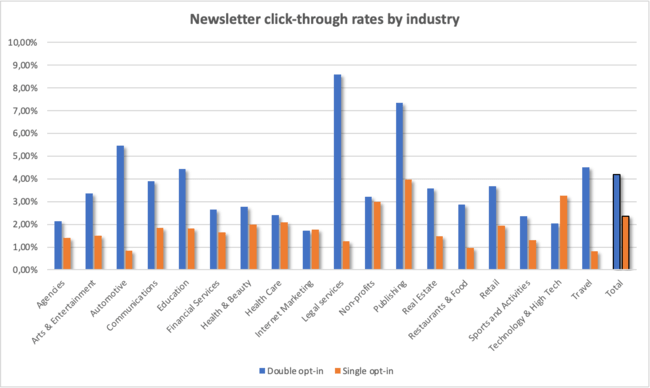
Source: GetResponse
While it might seem like an extra step, double opt-ins are not a hassle but rather a profound aid in email list management. They act as a shield against adding uninterested or unengaged individuals to your list.
Adding individuals to your email list without their consent can lead to adverse consequences. You'll find yourself with a list of disinterested recipients who are unresponsive to your brand's messages. This not only proves ineffective but also deteriorates your email metrics due to the low engagement levels.
In stark contrast, the double opt-in method serves as a powerful means of populating your mailing list with highly engaged contacts who genuinely want to hear from you.
Look at the number. With a single opt-in process, the newsletter open rate stands at 27.36%. However, when subscribers go through a double opt-in procedure, the open rate significantly jumps to 35.72%.
It definitely ensures that your audience is willingly opting in, setting the stage for meaningful and effective communication.
3. Verify & Update Regularly
Regular verification and updates for your email list are fundamental to maintaining the efficiency and credibility of your marketing campaigns. This continuous process involves thoroughly reviewing your list to eliminate inaccuracies, outdated data, and unresponsive subscribers.
Here's how to do it-
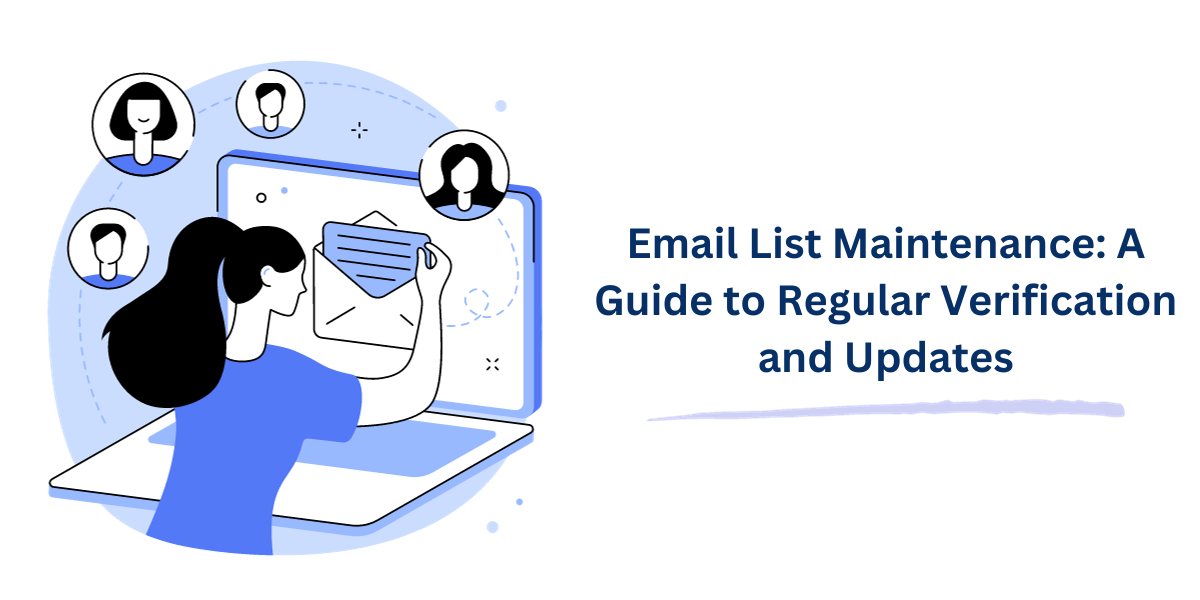
- Email Verification Services: As a small business owner or even for larger businesses with extensive email lists, manually verifying thousands of email addresses is not feasible. Email verification services and software are essential tools for this purpose. They efficiently check each email address for validity and take the burden off your hands, ensuring that your email list is accurate and updated.
Additionally, some services can also support the double opt-in process, further confirming the subscriber's genuine interest in receiving your emails. - Update Inactive Subscribers: Review your list for subscribers who haven't engaged with your emails for a long period. Send re-engagement campaigns to ask them to confirm their interest. If they don't respond, consider removing them from your list.
- Maintain a Suppression List: Keep a suppression list of subscribers who have explicitly opted out or unsubscribed. This ensures that you do not inadvertently re-add them to your email list.
Recent Marketing Articles
- An Inside Look at Meta Threads: Statistics and Insights for 2023
- Comprehensive Guide to Types of Sales Channels and Selling Your Product Successfully
- The Importance of a Targeted Biotechnology Industry Email List
- Generate Business Sales Leads With These Tips
- Best Ways to Generate More Business Leads
- How To Use Data In Marketing?
- Best Healthcare Email Lists Providers
- How ChatGPT Will Affect The Future Of SEO?
- How to Spend Your 2023 Marketing Budget: 5 Ways to Succeed This Year
- 10 Must-Know Tips for Marketing Your Law Firm In 2023
- How Buying B2B Data Helps To Close More Deals?
- 10 Tools That Actually Close More Deals
4. Don't Shy Away From Removing Subscribers
While it might seem counterintuitive, removing unresponsive or disengaged subscribers from your email list is a proactive move to ensure your email marketing efforts remain focused on an audience genuinely interested in your content. Consider this: 51.9% of marketers have chosen to remove inactive subscribers from their email lists
Because, more often than not, re-engagement campaigns may not yield the desired results. In such instances, it's crucial to decisively remove unengaged subscribers from your email list. These inactive subscribers can adversely impact your engagement rates and hinder your email deliverability.
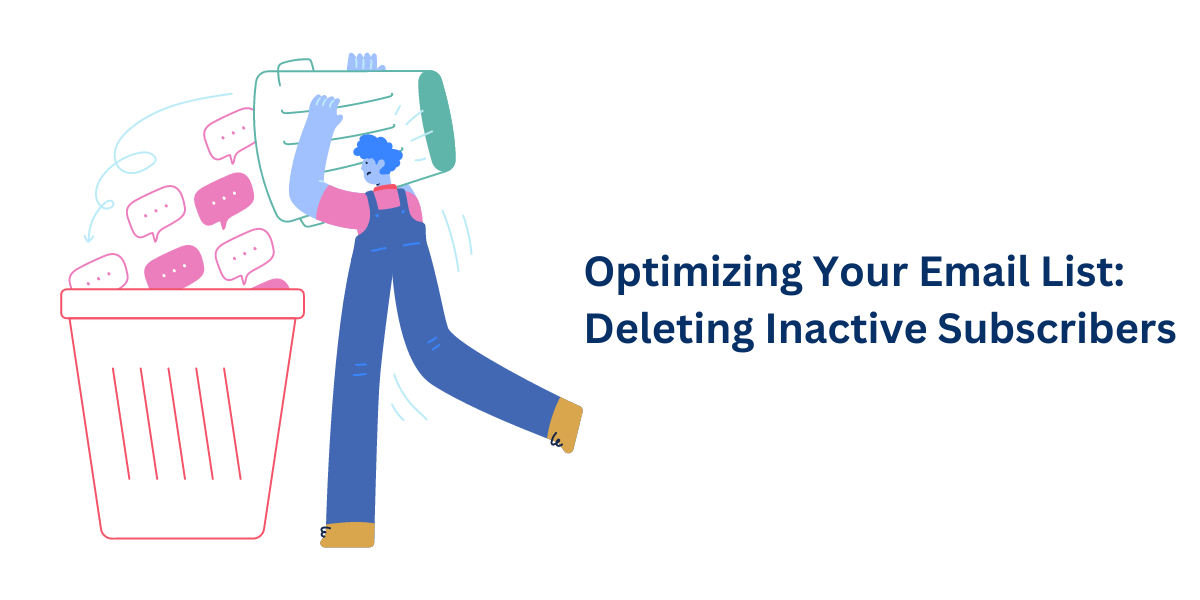
To maintain a pristine healthcare mailing list, consider implementing an automated workflow that systematically removes inactive subscribers, invalid email addresses, and potential spam traps. This automated process eradicates any elements that might compromise your email deliverability and overall performance, all without requiring your direct intervention.
Many modern email marketing platforms offer the capability to define conditions that trigger subscription deactivation, streamlining the process for you. Furthermore, including an unsubscribe link is not just good practice; it's a legal requirement in many countries and states. To ensure compliance and avoid potential legal issues, it's essential to have a robust method for refraining from emailing unsubscribers.
5. Give a Personal Touch To Your Email Campaigns
Personalization in email marketing extends far beyond simply using a subscriber's name. It involves leveraging the data you've gathered to create a more tailored and relevant email experience.
In this case, You should customize content based on the healthcare professionals' preferences, behavior, location, and other relevant factors.
This way, you can make them feel not only acknowledged but truly understood. This also enhances engagement rate as well as fosters a stronger and more meaningful connection with your audience.

Source: milesweb
The significance becomes strikingly apparent when you delve into the statistics. Consider this: when an email lacks personalization, a resounding 52% of customers express their likelihood to seek alternatives. Conversely, brands that infuse personalization into their promotional marketing emails enjoy a substantial 27% boost in unique click rates. These figures underscore the pivotal role that personalization plays in email marketing's effectiveness and customer engagement.
6. Segment Your Healthcare Database Dynamically
Did you know that 58% of revenue is generated thanks to segmentation? The full potential of your email list hinges on effective organization. Mere lumping of all subscribers together won't cut it.
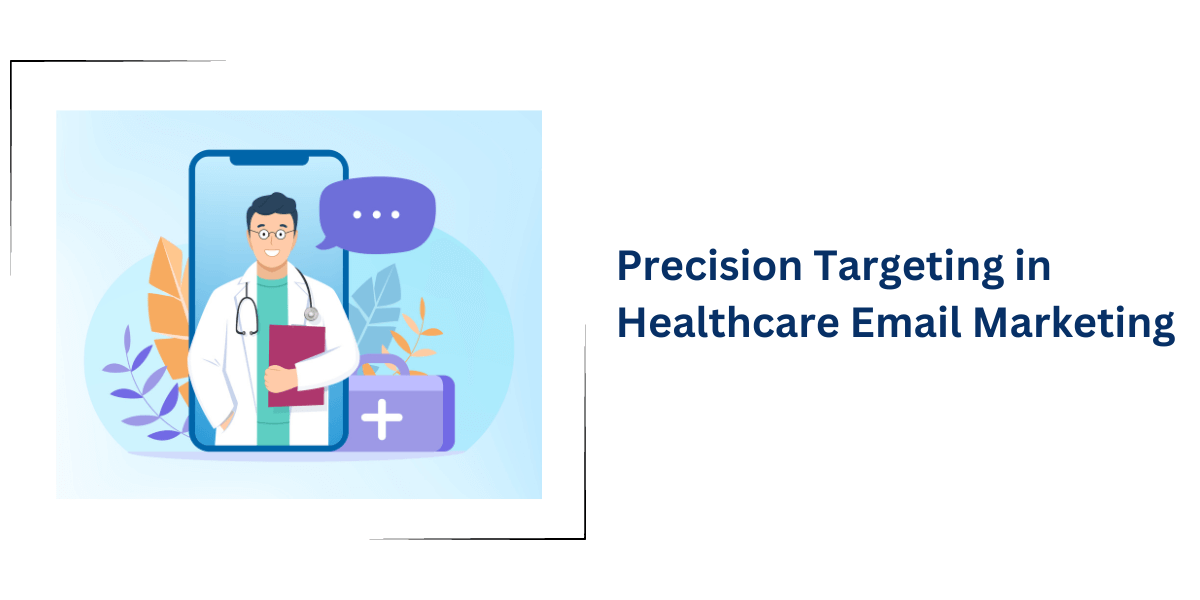
Even if you're not using multi-list signup forms, the magic happens when you segment your contact list while crafting a campaign. Tailor your filters based on attributes that align with the campaign's goals, such as location or purchase history. What's more, these segments can be saved as separate email lists for future use, streamlining your efforts for upcoming campaigns.
But here's the real game-changer: introduce an automated workflow that instantly places new subscribers into the relevant list based on specific criteria. Whether it's their status as a customer or just a subscriber, their browsing behavior, or language preference, automation ensures your lists are primed and ready for action. This not only saves time but keeps your lists in fighting shape for whatever campaigns lie ahead.
7. Prioritize and Assess Leads Before Advancing
Lead scoring is an advanced email list management tactic, useful to businesses with long and complex customer journeys. It stands out as the paramount method for prioritizing leads. This becomes increasingly clear when you look at the data; a staggering 70% of B2B leads aren't prepared to make a purchase.
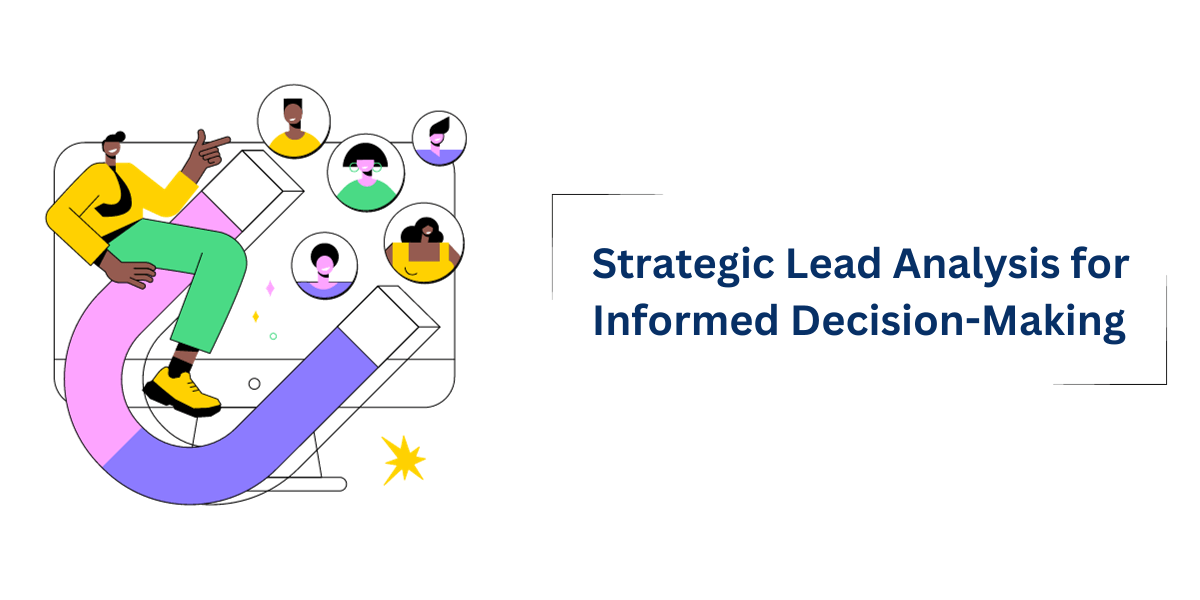
Lead scoring essentially evaluates the chance of converting a lead. Assessing the stage of each one helps in planning outreach and messaging. You’d likely send a different email to a new lead from an event and to someone who just requested a quote.
The technique involves assigning points to every contact based on their engagement history. For example, give one point for opening an email. If they click through your email, they can get two points. Viewing a product page can grant three points, and so on. As the lead engages more with your brand and shows more interest, their lead score increases.
To help you make decisions easier, 63% of companies already use lead scoring to prioritize leads.
8. Compliance and Data Security
In the field of email marketing, data is paramount. This is why compliance with privacy laws or data protection rules, such as the Health Insurance Portability and Accountability Act (HIPAA), GDPR, and CAN-SPAM, is of utmost importance.
Look at the significance of adhering to these regulations.
Importance of Compliance
- Legal Obligation: Compliance with healthcare data privacy regulations is not just a good practice; it's a legal requirement. Violating these regulations can result in severe penalties, including hefty fines and legal consequences.
- Customer Trust: Maintaining data privacy fosters trust. Customers expect their sensitive information to be handled with the utmost care and discretion. Complying with regulations reassures them that their data is safe.
- Reputation Management: Data breaches or violations can tarnish a healthcare provider's reputation. Compliance helps safeguard your brand's image and credibility.
Methods to Ensure Data Security in Email
- Secure Email Platforms: Invest in secure email platforms designed for healthcare communication. These platforms offer encryption, access controls, and audit trails to protect patient data.
- Encryption: Utilize end-to-end encryption for emails containing crucial information. This ensures that the content is only accessible to authorized recipients.
- Access Controls: Implement stringent access controls to restrict who can view and edit data. Only authorized personnel should have access.
- Audit Trails: Maintain audit trails that log all activities related to customer data. This helps track who accessed the information and when.
- Consent and Opt-Out: Obtain consent for email communications and provide an easy opt-out process. Prospects should have control over the information they receive.
- Regular Audits and Assessments: Conduct regular security audits and risk assessments to identify vulnerabilities and address them promptly.
- Incident Response Plan: Develop a robust incident response plan to address data breaches or security incidents swiftly and effectively.
9. A/B test emails Frequently
Optimizing your email strategy is an ongoing journey. To pinpoint the most effective messaging for your diverse customer segments, A/B testing emerges as a valuable ally. Not to mention, 59% of organizations already run A/B testing on emails, according to the latest data.
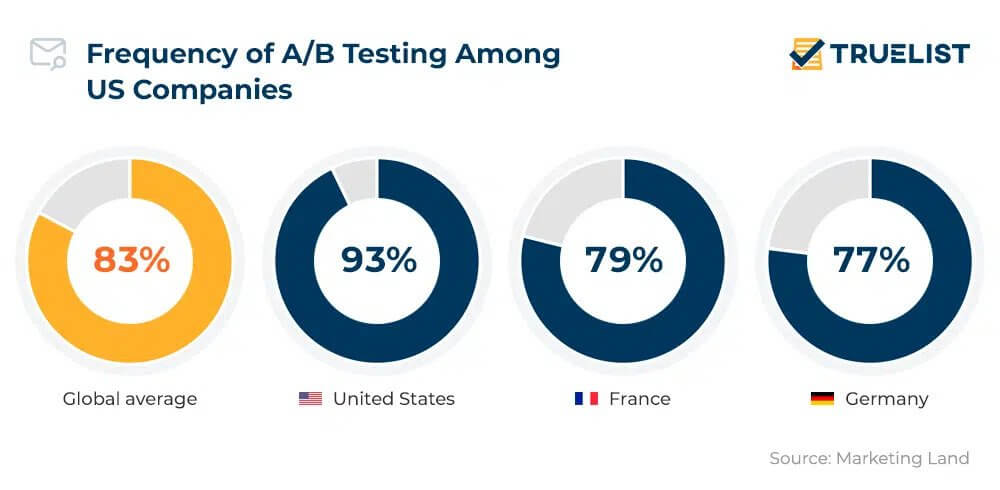
Source: Truelist
A/B testing enables you to experiment with various elements, unveiling what resonates best with your audience. You can assess subject lines, email content, send times, CTA (Call to Action) buttons, or visual components. The method involves running multiple versions of the same email campaign, altering one element at a time to discern its impact on engagement.
The efficiency of your A/B tests is significantly enhanced when you have the right email marketing tool at your disposal. Such tools seamlessly manage your A/B tests and deliver dependable results, enabling you to refine your email strategy with precision.
10. Utilize Email Efforts with Other Marketing Avenue Simultaneously
Successful email marketing extends beyond standalone campaigns. The key lies in seamlessly integrating your email outreach with other marketing channels, like social media and website content, weaving a tapestry of cohesive brand messaging.
Remember to adhere to some best practices, such as steering clear of spammy language, vigilantly managing email frequency, and prominently featuring an unmistakable unsubscribe option.
In this orchestrated symphony of marketing efforts, your email campaigns emerge as the harmonious linchpin, ensuring a unified brand presence that connects with your audience.
Do You Own a Healthcare Email List? - Assess the Wellness of Your Database Now!
Ask yourself some questions –
- Does everyone in your network have a clear understanding of your business?
- Do your previous clients repeatedly return to you for their Healthcare needs?
- Do your satisfied clients consistently refer your products or services to others?
If your response to any of these questions is negative, it's a clear signal that it's time to take proactive measures. Consider implementing the approaches mentioned in this blog to address these areas and enhance your effectiveness in your professional domain.
The strategies mentioned in this blog hold the key to addressing these areas and amplifying your impact within your professional domain. By embracing these approaches, you can begin to weave a more robust professional network, provide even more value to your clients, nurture lasting relationships, and ensure that your services receive the recognition they deserve.
Don't view these questions as shortcomings but rather as catalysts for your professional evolution. Each challenge presents an opportunity to refine and amplify your presence, ultimately propelling you to even greater heights in your career.

